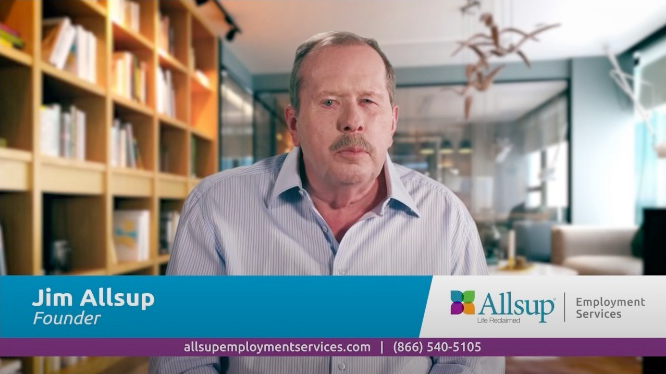
Filing A Social Security Disability Application: Basics To Applying for SSDI

What Is Social Security Disability Insurance (SSDI)?
Social Security Disability Insurance is an insurance policy that you’ve paid into via your FICA taxes for all the years you worked. The monetary support you receive through Social Security disability benefits continues until you’re able to return to work on a regular basis or until retirement age, when it automatically converts to retirement benefits.

Basics About Getting SSDI Benefits
The Social Security Administration (SSA) reviews your work and medical history to determine if you qualify for Social Security Disability Insurance benefits.
Do I Qualify for Benefits?
- Have a medical condition, illness or injury that prevents you from working for 12 months or is terminal.
- Meet the definition of disabled under SSA rules.
- Have worked 5 of the last 10 years in jobs where you paid FICA taxes.
- Are at least 21 and have not reached full retirement age.

How Do I Claim SSDI?
To get Social Security Disability Insurance benefits, you must apply to the SSA. The initial application and the detailed information you provide are critical to getting benefits early. You can complete the Social Security Disability application on your own, or have a disability representative like Allsup fill it out for you.
The SSA reviews applications to determine whether you qualify for monthly Social Security benefit payments. This sounds simple, but you must have medical evidence and documentation to prove you meet the legal definition of disabled, and carefully complete the forms because it’s possible to make simple mistakes that could lead to denial.
The year you were born
For SSDI, you must be younger than your full Social Security retirement age.
Your average annual income
Enter your average for the last 10 years, up to $120,000
Am I Qualified To Apply For Disability?
The SSA looks at medical and work history to determine who qualifies for SSDI benefits. Generally, to qualify for SSDI, you must:

Be between 21 and full retirement age

Have worked at least five of the last 10 years and paid FICA taxes during that time

Be unable to work in any capacity because of a mental or physical impairment that’s expected to last at least 12 months or result in death

Be under the care of a healthcare professional who can confirm severity of medical condition(s)
Ready To Take The SSDI Screening?
SSDI Is Your Gateway To A Range Of Benefits And Income
Approval for Social Security Disability Insurance unlocks access to money-saving, life-enhancing benefits beyond regular monthly income.
Medicare Coverage
You’re eligible for this medical, hospital and prescription drug coverage 24 months after your SSDI benefits begin.
COBRA Extension
The length of your COBRA benefits could be extended an additional 11 months.
LTD Security
If you have private long-term disability (LTD) insurance, it probably requires you to apply for SSDI. Doing this can protect LTD benefits.
Retirement Benefits
Approval for SSDI triggers a Social Security earnings record freeze that can result in a higher retirement income.
Dependent Benefits
SSDI approval can activate benefits for your children under the age of 18, adding up to 50% more income to your monthly payments.
Cost-of-Living Adjustment
The SSA evaluates cost of living allowances annually, which could increase your monthly payment.
Tax Relief
You may not have to pay income taxes on a portion of the SSDI benefit payments you get each month.
Return to Work
There are incentives if you return to work: free help from a certified Employment Network, protection to work and receive SSDI benefits, and more.
Your Medical Diagnosis And Getting Disability Benefits
Federal Or State?
Social Security Disability is a federal program. However, claims are first reviewed by SSA-funded state offices, so some administrative processes may vary based on where you live.
How Long Does It Take To Get Social Security Disability Insurance Benefits?
Unfortunately, the Social Security disability application and appeals process can mean lots of waiting, so make it your goal to get approved as early as possible in the process.
Give careful attention to initial application forms, whether you work on them alone or with Allsup’s help. Also consider taking a FREE assessment before you fill out a single line on your application, to ensure the time you invest in the SSDI process is well spent.
Good to Know
There is a 5-month waiting period for benefits, this is a big reason to apply as soon as you believe you’ll be out of work for 12 months.
Where Are You In The Social Security Disability Process?
There are five different levels in the SSDI process. Working with Allsup from the start, gives you a 50% higher chance of getting approved when you initially apply. This will save you months of waiting for a decision and gets monthly benefit money in your hands much sooner than applying on your own.
Steps of the SSDI Process
Check out your eligibility for SSDI when you first apply or move forward with an appeal, and find an expert advocate to represent you.
Don’t Go It Alone. Choosing Allsup Can Increase Your Likelihood Of Being Awarded Benefits By 50%.
With our decades of experience and record of success, Allsup delivers True Help® to all our customers. You can see by the chart below that our service far exceeds applying on your own. Do you really want to trust your SSDI journey to anyone else?
| A personal representative that advocates with SSA on your behalf. | Won SSDI benefits for 400,000 people nationwide | Includes help with Medicare choices. | SSA-Approved Employment Network offering return to work services | Online portal that streamlines the process. | Assistance with appeals. | Disability Financial Services℠ to help with the financial challenges you face | |
|---|---|---|---|---|---|---|---|
| Applying on Your Own | |||||||
| Applying With Others |
Key Social Security Disability Insurance Terms To Know
Learn to speak the language of SSDI, here and now. This glossary of terms includes what’s most important to know, including the legal disability definition that’s used for Social Security disability benefits.
Terms
Administrative Law Judge (ALJ)
Appeal
Back Benefits
Compassionate Allowance
Load More
Date of Entitlement
Disability
- SSA legal definition: Inability to engage in any substantial gainful activity by reason of any medically determinable physical or mental impairment(s) which can be expected to result in death or which has lasted or can be expected to last for a continuous period of not less than 12 months.
- Everyday translation: You have a medical condition that prevents you from any type of work for 12 months or more, or result in death.
Disability Determination Services (DDS)
Form SSA-1696
Medicare
Office of Hearings Operations (OHO)
Reconsideration
Social Security Administration (SSA)
Social Security Disability Insurance (SSDI or SSD)
Supplemental Security Income (SSI)
Ticket to Work Program
Waiting Period
Social Security Disability Application Questions
When do you believe your condition(s) became severe enough to keep you from working?
How much were your total earnings last year?
Do you prepare your own meals?
Expert Help For SSDI From Allsup
When a disability changes your way of life, choices can be overwhelming. Allsup can make one decision easier. When you need disability assistance, you need an expert.
At Allsup, we’re here to help you find out if you’re eligible for Social Security Disability Insurance benefits. Approval for SSDI unlocks regular monthly income, Medicare and other life-enhancing benefits.
Why Allsup? We have helped over 400,000 people get their benefits in nearly 40 years. Our specialized services get results for people with disabilities, so put Allsup to work for you. Increase your chances of success and get your benefits faster.
Return To Work? Protect Your SSDI Benefits While You Work
Learn more from our Founder Jim Allsup about the incredible financial value of the Ticket to Work program (TTW), and how our experts can help you get started for free. If you’re currently receiving Social Security Disability Insurance (SSDI), you can protect your SSDI and Medicare benefits while returning to work.
All Things Disability® Blog
Learn more about Allsup and its services by visiting All Things Disability®, a blog for Allsup customers and visitors featuring important information for people with disabilities, including trends and data, news and updates, research and thought leadership on Social Security Disability Insurance, veterans disability appeals, health insurance, medical issues and personal finances.
Recent Blog Articles
Subscribe To Be Notified When A New Blog Is Posted
Provide your email address here
Want To Find Out More About The SSDI Process?
Our founder and CEO Jim Allsup literally wrote the book on SSDI. Download his FREE eBook today!








